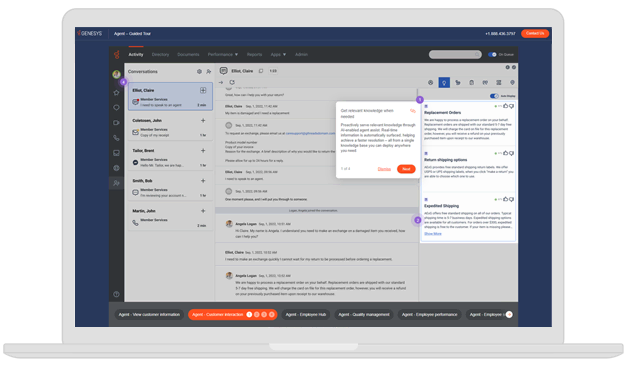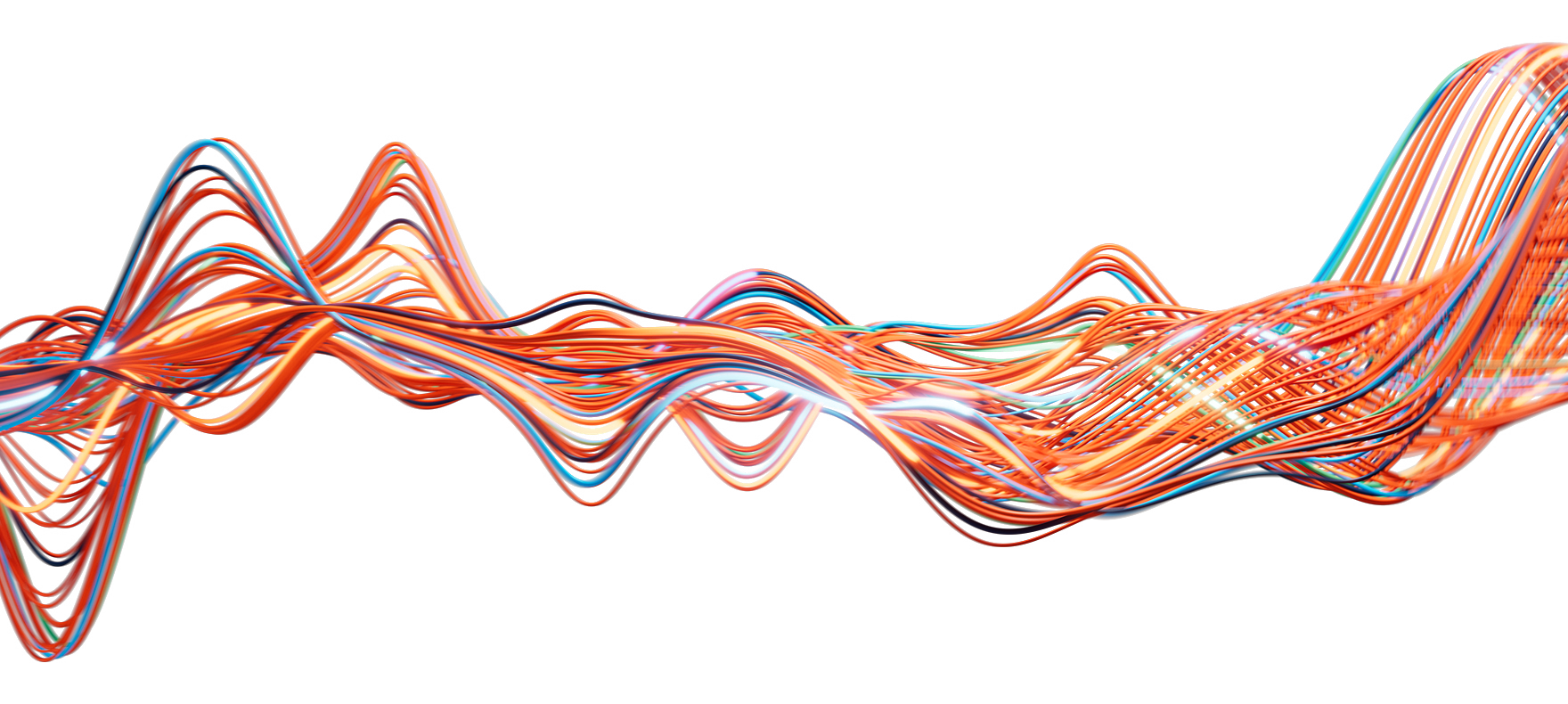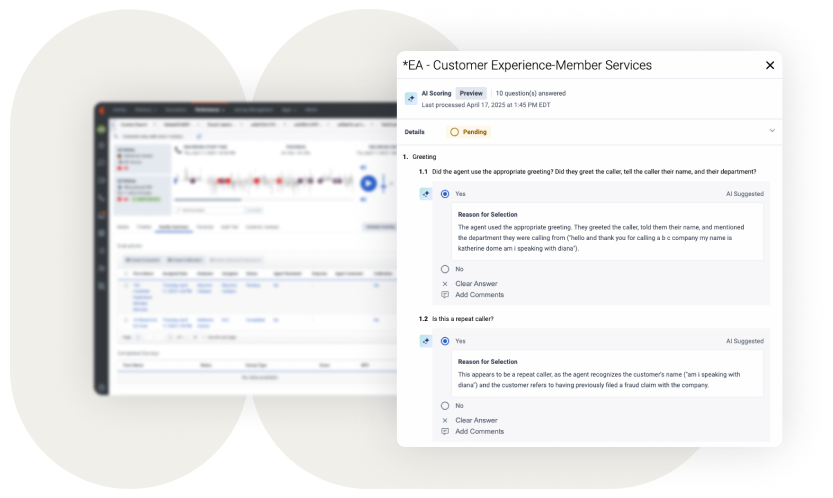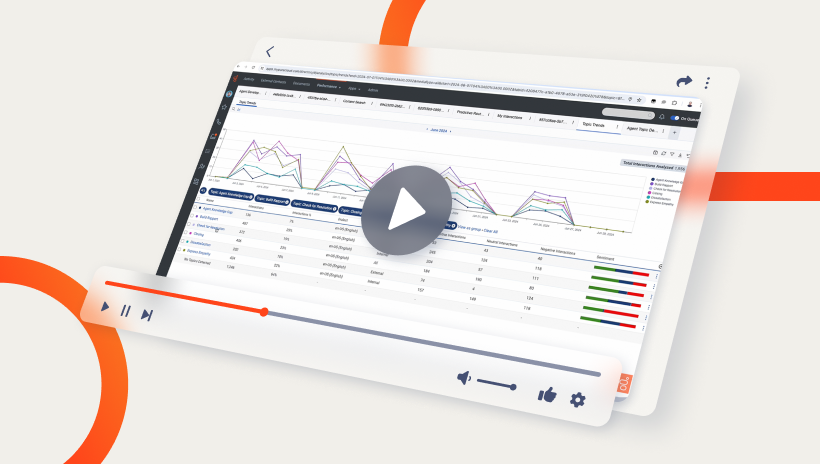What is quality management?
Quality management covers a suite of tools and processes designed to handle interactions more effectively and efficiently. This system includes interaction and screen recording, real-time monitoring, and tools for locating and evaluating recorded interactions. Reporting and calibration features are common, as are speech and text analytics capabilities.
Why is interaction recording important?
Interaction recording captures and stores exchanges between customers and agents. This is essential data to monitor team performance in call handling. It gauges the quality of service provided and the overall customer experience. By using actual conversation examples, it promotes effective coaching and agent development.
Interaction recording is also necessary for regulatory compliance and liability protection. It addresses compliance norms from the specific industry and region that renders the service and aids in resolving claims and disputes.
How can automated scoring work in a contact center?
Generative AI scores interactions using contextual understanding to answer questions and provides a reason for selection. This ensures a scalable, fair evaluation process. But it’s important to keep a balanced approach to scoring based on AI regulations. Genesys AI Scoring fully complies with all relevant global regulations. Supervisors maintain control to enable or disable AI scoring, and AI-scored evaluations require humans to approve all evaluations.
What are the benefits of quality assurance?
Contact center and call center quality monitoring enables you to uphold consistency and peak efficiency in operations. Its methodologies set a single service standard across all customer service teams. This gives teams clear guidelines and benchmarks to achieve industry-leading customer service. It also improves team performance and pinpoints areas for contact and call center managers to lead in development and problem solving.
What is speech and text analytics?
Speech and text analytics empowers contact centers to glean insights from customer-agent dialogue, focusing on sentiment analysis and topic trends. These insights highlight areas of improvement, recognition and concern to help contact centers better understand and serve customers and employees. Speech and text analytics features can provide transcription and analytics on 100% of interactions for deep insight into customer-agent conversations.
What is quality assurance in a call center?
Quality assurance in a call center evaluates agent performance and ensures that interactions align with set standards of service excellence. Using tools like call monitoring and performance indicators, contact centers can boost customer satisfaction. This can directly influence Net Promoter Scores (NPS) and customer retention.
What’s the difference between quality assurance and quality control in a call center?
In call centers, quality assurance is proactive and focuses on process-oriented activities. Its goal is to optimize agent performance. It does this through consistent agent training and customer experience (CX) processes, such as social media interactions, to meet desired service outcomes.
In contrast, quality control is reactive. It looks at completed interactions to ensure they meet established criteria. Quality control uses tools like call monitoring to detect and rectify errors.
How do you create a call center quality assurance process?
To establish a call center quality assurance program, first set clear service standards. These might include performance indicators like NPS. Then implement interaction recording tools for call monitoring, review interactions regularly to gauge an agent’s performance and offer feedback.
How do you pass QA in a call center?
For agents in call centers to excel in QA, they need to understand and adhere to organizational service standards. In addition to benchmarks like NPS, call center agents need regular training that demonstrates proficiency across channels. These include social media and continuous call monitoring. Agents should also stay updated on performance indicators and seek feedback to enhance performance that supports customer retention.
What is the QA score in a call center?
The QA score is a metric that contact centers use to assess the quality of interactions between customers and agents. QA scores do not have set or standardized components across the industry — your business can determine how its QA score is measured based on the particular key performance indicators (KPIs) you want to measure agents against.
Why do you need quality assurance and performance management?
Quality assurance and performance management play a critical role in the success or failure of your customer support efforts. The QA process allows your team leaders to assess which agents are top performers, which need training or coaching, and precisely where each is succeeding and failing. This way great agents are recognized and rewarded and agents who are underperforming can be brought up to the standard that meets customer expectations.
How can call center quality assurance help in identifying training needs for agents?
When done right, call center QA is the perfect tool to identify customer service agents’ training needs and build training programs. The best QA tools have artificial intelligence built in, which can automatically transcribe customer interactions and scan them for specific positive and negative triggers. A training program can easily be built around this data, without a person having to spend hours combing through call after call for information, and without them having to painstakingly manually transcribe each call.
What metrics are commonly used to measure performance in call center quality assurance?
There’s any number of key performance indicators a business can focus on when measuring call center performance. Some of the most common include first-call resolution (FCR), average handle time (AHT), customer satisfaction score (CSAT), Net Promoter Score (NPS), occupancy rate and service level. A QA scorecard that follows best practices can have some or all of these metrics, or more.












